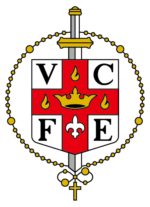Let us not end the month of September without talking about the first Filipino saint, San Lorenzo Ruiz de Manila. What could we learn from him in regards to our national identity?
World War II scorched Manila and its suburbs, leaving us with burned cultural heritage and documents forever gone, including important documents on the life of the first Filipino saint. However, some chronicles mentioned that he was born and baptized in Binondo.
Binondo nowadays is associated with the Chinatown, and it must be. Before the establishment of Manila as the capital of Filipinas, Chinese traders were living among the early Filipinos. By the year 1580, their number had grown since the economy of the young Filipinas was so strong that it attracted immigrants, a phenomenon that is still happening. The chinese were traders, involved in the legendary Galleon Trade. Their growing population made the govenerment to portion them a new quarters outside Intramuros called “Parian”. The word Parian came from the pari, which means priest. The reason was Parian was a mission territory for the Chinos Cristianos under the care of the Dominican prayles. The Chinos Cristianos werere the Chinese who have converted to the Catholic Faith and as residents of the Filipinas, they were given Spanish citizenship.
Around 20 years after the foundation of the Parian, San Lorenzo Ruiz was born. His father was Chinese, his mother a Tagalog. Such intermarriage among the Spaniards, Chinese and Filipino were common.

San Lorenzo Ruiz worked as a escribano, a clerk for his parish in Binondo. This works calls for knowledge of the Roman script and the Spanish Language, which the prayle did not withheld from the natives and sangleys.
Think about it, why would the friars build such cities and civilization in the Philippines if these would only benefit the Spaniards?— they already have them in Spain! Why waste efforts for a tiny indio? And to live in the Philippines would torment those white men who used to live in a temperate climate.
If all the Spaniards and the friars were just oppressors of the Filipinos, why Lorenzo Ruiz did not recant his faith in front of the Japanese persecutors, if such recantation would free him from the Spanish tyranny? Much more, he chose to die with those prayle who were supposed to maltreat him?
Modern textbooks would talk only about the Spanish oppression, the frailocracy which makes us think that the only thing the prayles contributed to the Filipinas was sin. In 1650, there were 7350 Spaniards versus 35124 Chinese and Filipinos living in Manila, and yet Spain stayed with us for 200 years more. The Catholic faith has also taken root in the nascent Filipinas that in less the 100 years, a Lorenzo Ruiz became possible.


Leave A Comment